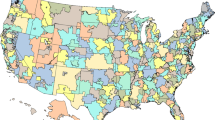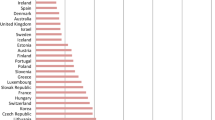Abstract
With the changing economic situation, mental health administrators are faced with the task of directing scarce resources to priority populations. Most statistical concepts, however, were developed in a time when agencies were primarily concerned with issues of needs assessment and outreach, and they may be less useful in a time of retrenchment, when agencies must prioritize services in spite of an often overwhelming demand. This paper offers additional indicators, which are simple and readily available and which may be useful in answering today's administrative questions.
Proposed indicators are: (1)Density, the proportion of target patients among all patients who use a certain service, (2)Service Utilization Rate, the number of target patients that utilize a certain service as a proportion of all target patients, and (3) two measures ofService Intensity. The measures of service intensity included mean frequency of service and the mean charge amount per type of service per standard unit of time as an indicator of the intensity of resource utilization, and, indirectly, of the intensity of care.
Examples of the importance of using multiple indicators in community mental health center administrative decision-making are provided. Implications for public policy are discussed.
Similar content being viewed by others
References
Bloom, B.L. Prediction and monitoring of resource utilization in a community-oriented mental hospital.American Journal of Public Health 1970,16 2257–2268.
Davis, H.R., & Salasin, S.E. Utilization of evaluation. In E. Struening and M. Guttenbach (eds.).Handbook of evaluation research, Vol. I. Beverly Hills: Sage, 1975.
Endicott, J., Spitzer, R.L., Fleiss, J.L., & Cohen, J. The global assessment scale.Archives of Genral Psychiatry 1976,33 766–771.
Hagedorn, H.J., Beck, K.J., Neuberg, S.F., & Werlin, S.H.A working manual of simple program evaluation techniques for community mental health centers. DHEW Publication No. (ADM) 76-404. Washington, D.C.: U.S. Government Printing Office, 1976.
Heiman, J.R., & Mundt, J.W.Evaluation of service, clientele and change in an urban mental health center: Harborview Community Mental Health Center. Seattle, Washington: University of Washington, July, 1981.
Heller, K. & Monahan, J.Psychology and community change. Homewood, IL: Dorsey: 1977.
Johansson, S.L., Silverberg, R., & Lilly, R.S. Therapy improvement in two outpatient mental health clinics.Journal of Community Psychology 1980,8 34–44.
Levin, H.E. Cost-effectiveness analysis in evaluation research. In M. Guttenbach & E.L. Struening (eds.),Handbook of evaluation research, Vol. II. Beverly Hills: Sage, 1975.
National Institute of Mental Health, Division of Biometry and Epidemiology, Survey and Reports BranchStatistical note No.160 DHHS Publication No. (ADM) 82-158. Washington, D.C.: U.S. Government Printing Office, 1981.
Rosen, A., Olarte, S., & Masnick, R. Utilization patterns of a community mental health center in an urban ghetto area.Hospital and Community Psychiatry 1980,31 702–704.
Smead, V.S., Smithy-Willis, D., & Smead, R.J. Utility of sex, marital status, race and age in targeting populations for mental health services.Psychological Reports 1982,50 843–855.
Tischler, G.L. The use of MSIS in program evaluation. In E.M. Lasker and R. Bank (eds.),Safeguarding Psychiatric Privacy. New York: Wiley & Sons, 1975.
Tischler, G.L., Henisz, J.R., Myers, J.K., & Boswell, P.C. Utilization of mental health services: I. Parenthood and the prevalence of symptomatology in a community.Archives of General Psychiatry 1975,32 411–415.
Tischler, G.L., Henisz, J.R., Myers, J.K., & Boswell, P.C. Utilization of mental health services: II. Mediators of service allocation.Archives of General Psychiatry 1975,32 416–418.
Weissman, M., & Myers, J. Affective disorders in a United States community: The use of research diagnostic criteria in an epidemiological study.Archives of General Psychiatry 1978,35 1304–1311.
Wendle, C., Rosen, B.M., Goldsmith, H.F., & Shambaugh, J.P. A demographic system for comparative assessment of “needs” for mental health services.Evaluation 1975,2 73–76.
Wolfe, C.J., & Schulberg, H.C. The design and evaluation of future mental health systems. In G.R. Stahler & W.R. Tash (eds.),Innovative Approaches to Mental Health Evaluation. New York: Academic Press, 1982.
Author information
Authors and Affiliations
Additional information
Dr. Verhulst is Associate Professor, Department of Psychiatry and Behavioral Sciences, School of Medicine, University of Washington, Seattle, Washington.
Dr. Mundt is Executive Director, Harborview Community Mental Health Center.
Partial funding for this project was provided by the Washington State Division of Mental Health.
Rights and permissions
About this article
Cite this article
Verhulst, J., Mundt, J. Mental health administration and service utilization patterns. Administration in Mental Health 14, 28–43 (1986). https://doi.org/10.1007/BF00822037
Issue Date:
DOI: https://doi.org/10.1007/BF00822037




